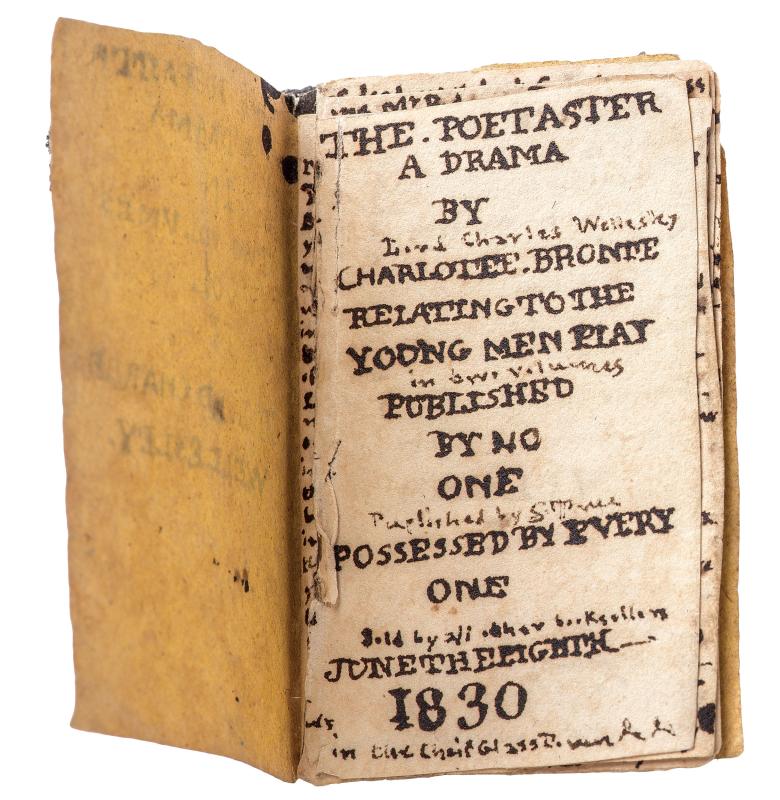
Download image:
Record ID:
81845
Accession number:
MA 2696.10
Date:
1830 June 8-July 12.
Credit:
The Henry Houston Bonnell Brontë Collection. Bequest of Helen Safford Bonnell, 1969.
Description:
1 item (16 pages, bound) ; 49 x 32 mm
Notes:
T.p.: "Published / By No / One / Published by S. Tree / Possessed by Every / One / Sold by all other booksellers / June the Eighth / 1830 / in The Chief Glass Town &c. &c."
Written in a microscopic hand.
Binding:
Originally housed in yellow paper wrappers in brown leather volume (15 cm). Binding removed and retained.
Provenance:
Henry Houston Bonnell; his wife, Helen Safford Bonnell.
Catalog Link:
Department:

More than a decade before Jane Eyre, Charlotte Brontë cowrote a series of short tales with her siblings Branwell, Emily, and Anne. They inscribed these stories within handmade books to share with one another. Their fictional worlds of Glass Town, Angria, and Gondal are populated with characters the children invented when Branwell received a box of toy soldiers as a gift. Each soldier became a character; Charlotte's favorite was Arthur Wellesley, Duke of Zamorna and son of the Duke of Wellington.
When she wrote this satiric play, which derives its title and theme from a 1601 work by the early modern English dramatist Ben Jonson, the fourteen-year-old Brontë was already considering what it takes to be an artist. Is it inspiration, hard work, or something in between? In her play, two pretentious poets consider the issue. (A "poetaster" is a person who writes bad poetry.) She designed a title page that mimicked printed type and declared that the book was "published by no one, possessed by everyone" and sold by booksellers in Glass Town, the principal city in her fictional federation.
The miniature manuscript booklet in which she wrote down her play is less than two inches tall and composed in a microscopic script. The script is at once a feat of penmanship and a way of managing readers-intended for children, the miniscule letters were not suited for adult eyes. There are other surviving Brontë sibling manuscripts written in a similar miniature script. The Morgan holds several of these manuscripts, including "Catalogue of my books with the periods of their completion up to August 3 1830," which lists all of Charlotte Brontë's youthful compositions.